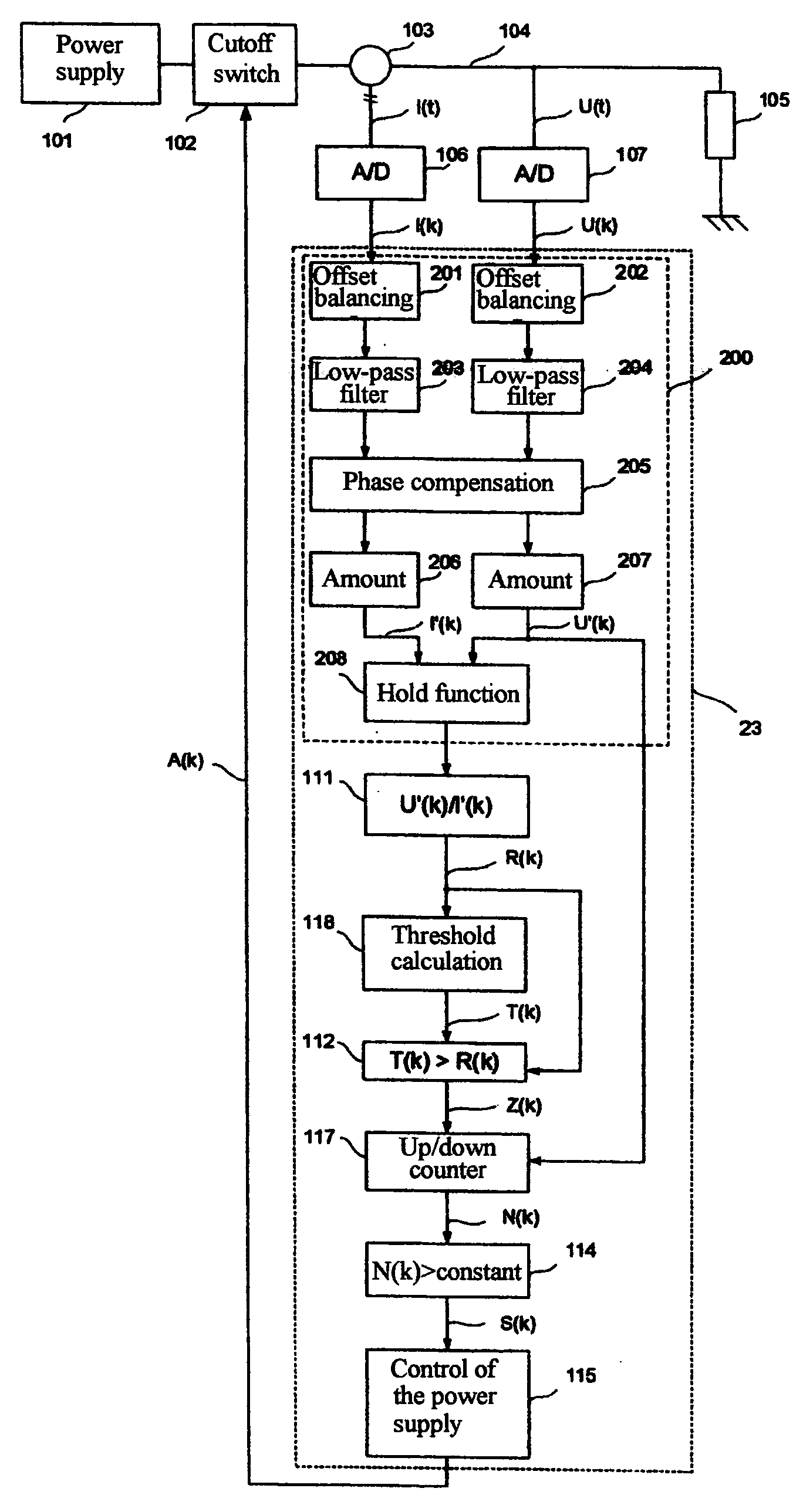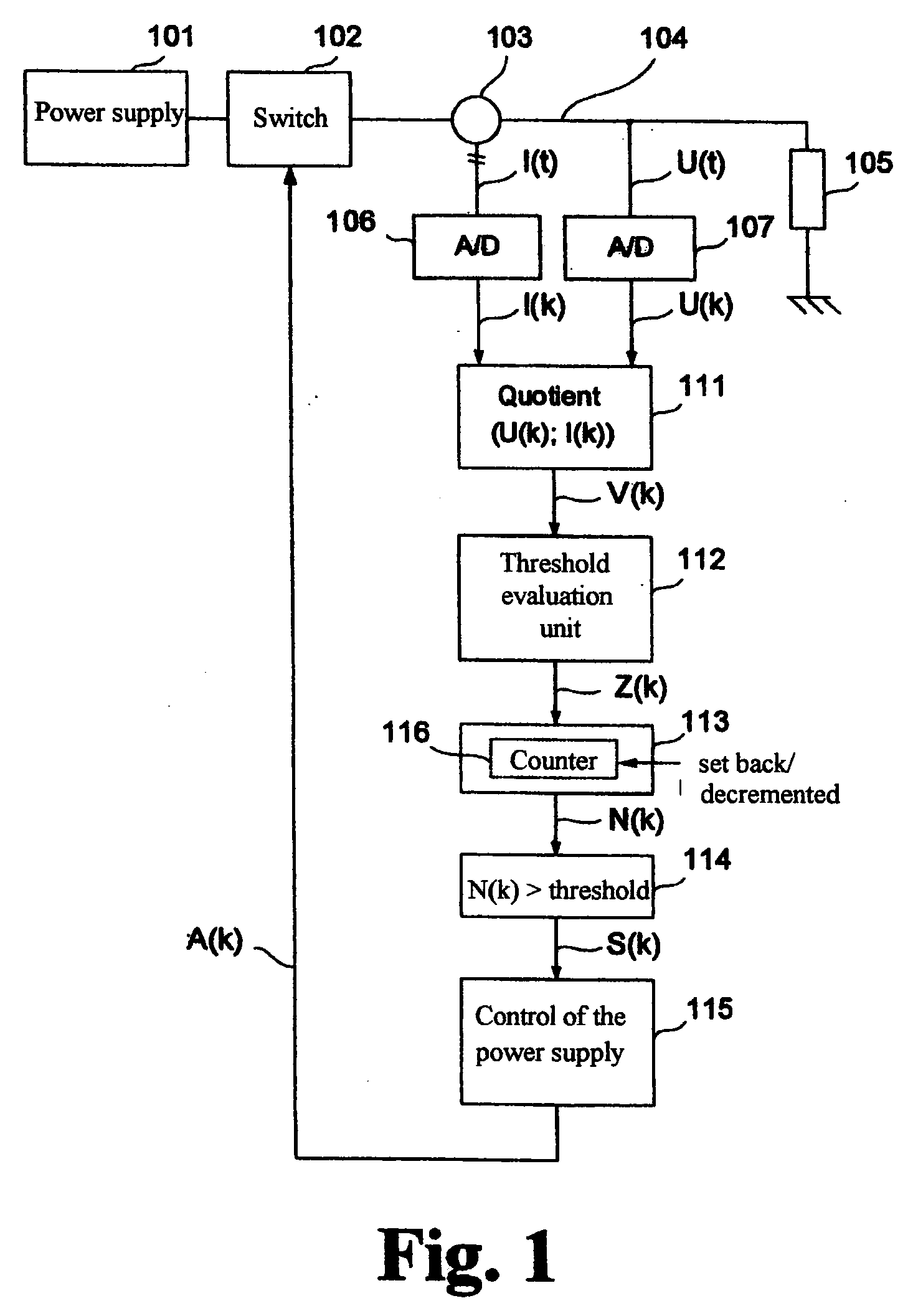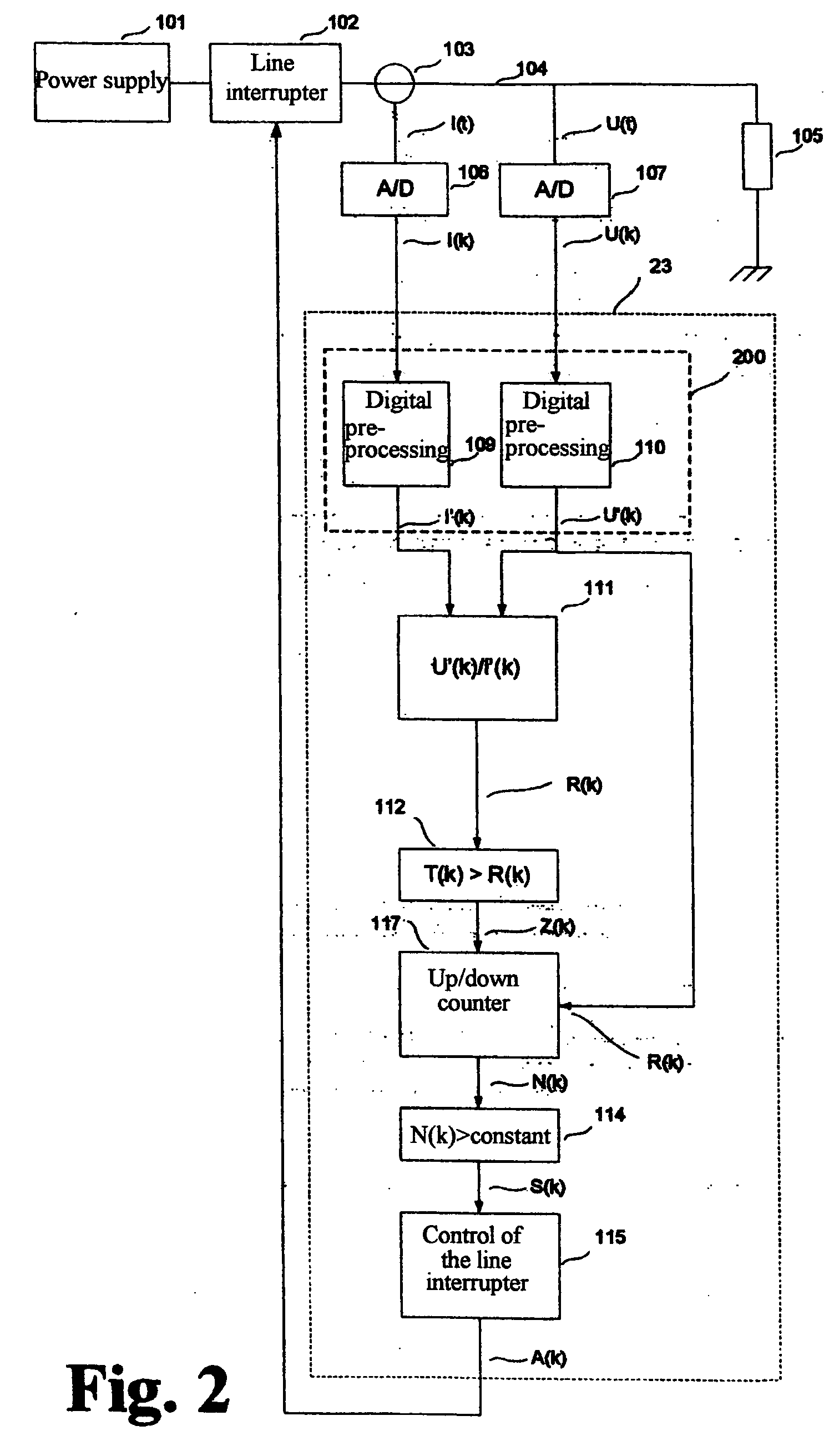Method and device for the detection of fault current arcing in electric circuits
a fault current and electric circuit technology, applied in the direction of electric digital data processing, emergency protection arrangements for automatic disconnection, instruments, etc., can solve the problems of arcing fire, fault current arcing, or arc tracking, which is particularly dangerous in aircraft wiring, and achieves the effect of reducing the erroneous triggering of safeguards
- Summary
- Abstract
- Description
- Claims
- Application Information
AI Technical Summary
Benefits of technology
Problems solved by technology
Method used
Image
Examples
Embodiment Construction
[0060]FIG. 1 shows a basic arrangement of a load circuit of any type for realizing the method according to the invention. The load circuit comprises a power supply 101, a switch 102 used for line interruption, a load 105 (e.g., a high-current heater), and an electric line 104 for supplying current to the load 105 (the current return is assumed to be a ground contact at the load 105). It is assumed that the line 104 is connected to an electric load 105 whose resistance does not change or changes only slowly.
[0061] A current sensor 103 followed by an A / D converter 106 and a voltage sensor in the form of an A / D converter 107 are arranged on the line 104 for detecting fault current arcing. Time-discrete current values I(k) and voltage values U(k) are provided synchronously at the outputs of the A / D converters 106 and 107 and are processed in a division element 111 to form an actual ratio value V(k). In so doing, either the resistance or the conductance of the load circuit can be calcul...
PUM
 Login to View More
Login to View More Abstract
Description
Claims
Application Information
 Login to View More
Login to View More - R&D
- Intellectual Property
- Life Sciences
- Materials
- Tech Scout
- Unparalleled Data Quality
- Higher Quality Content
- 60% Fewer Hallucinations
Browse by: Latest US Patents, China's latest patents, Technical Efficacy Thesaurus, Application Domain, Technology Topic, Popular Technical Reports.
© 2025 PatSnap. All rights reserved.Legal|Privacy policy|Modern Slavery Act Transparency Statement|Sitemap|About US| Contact US: help@patsnap.com



